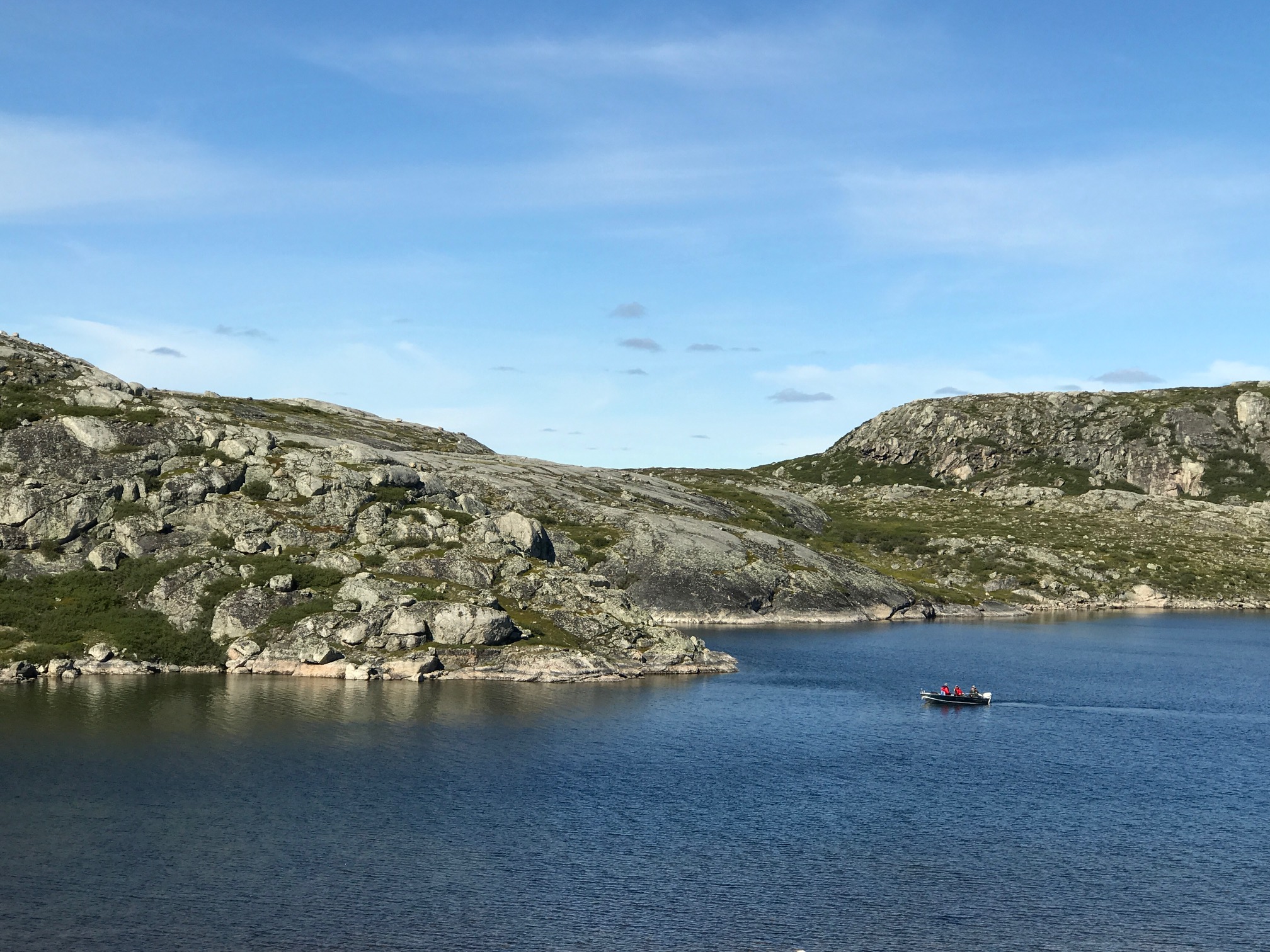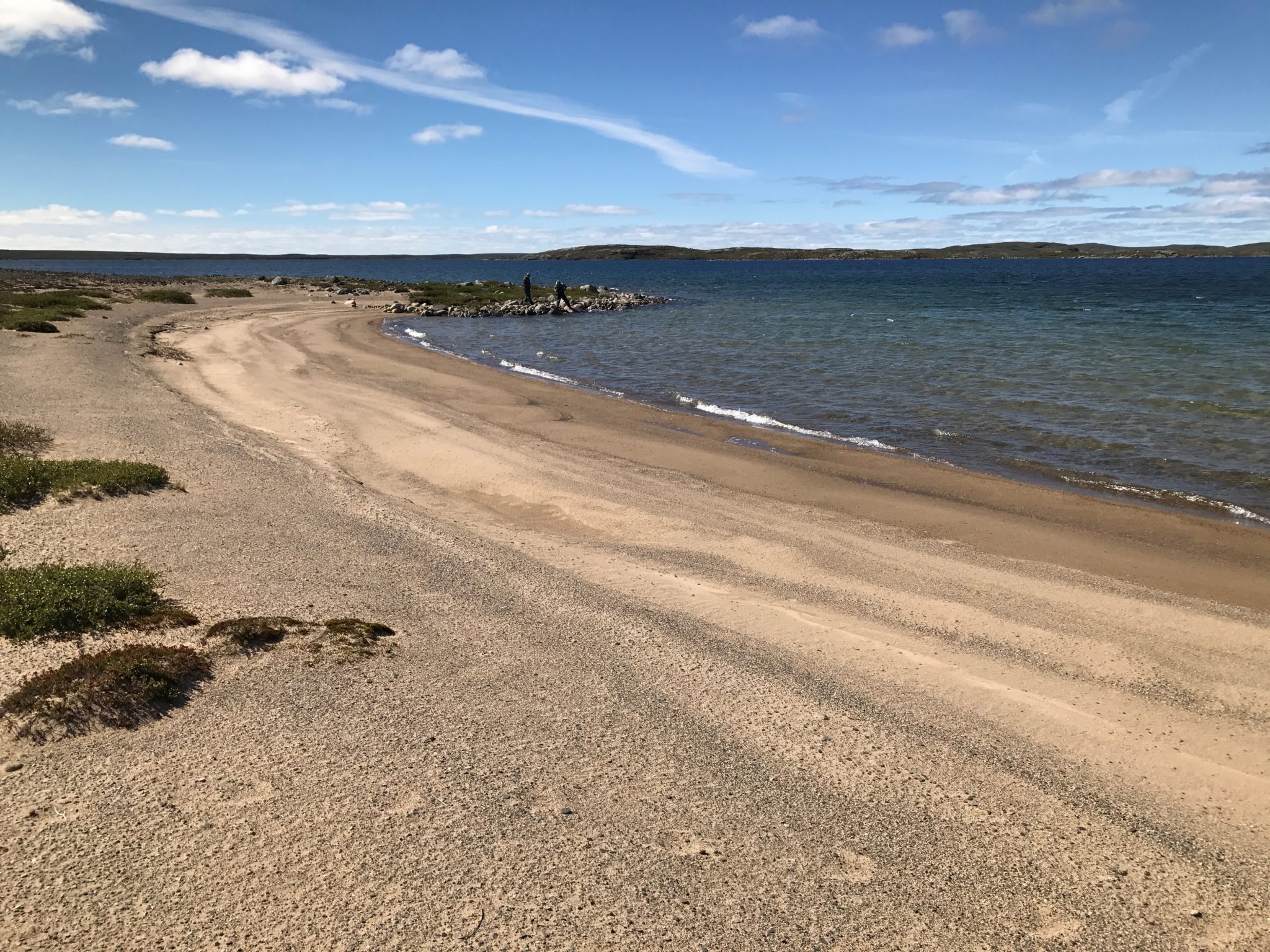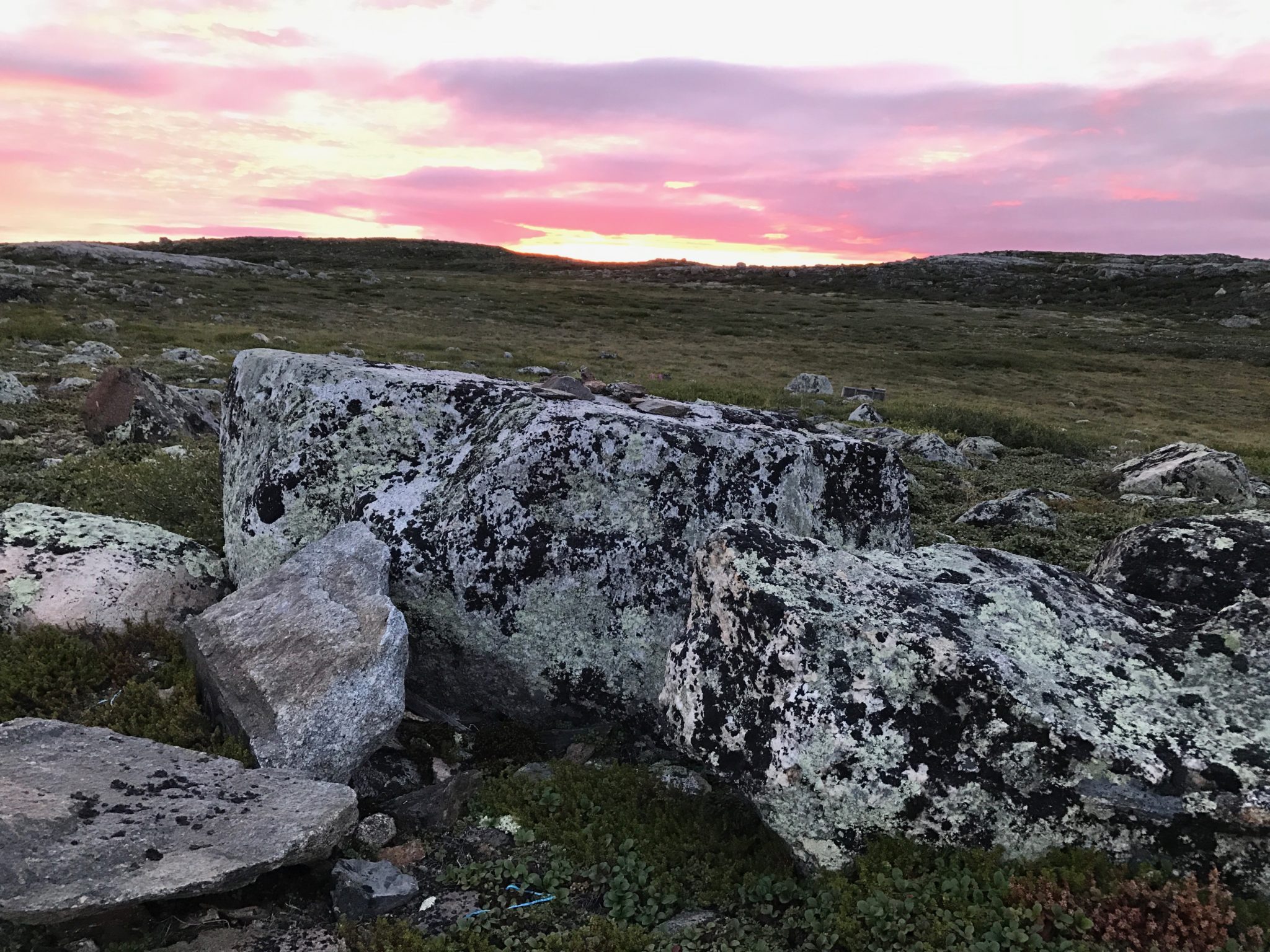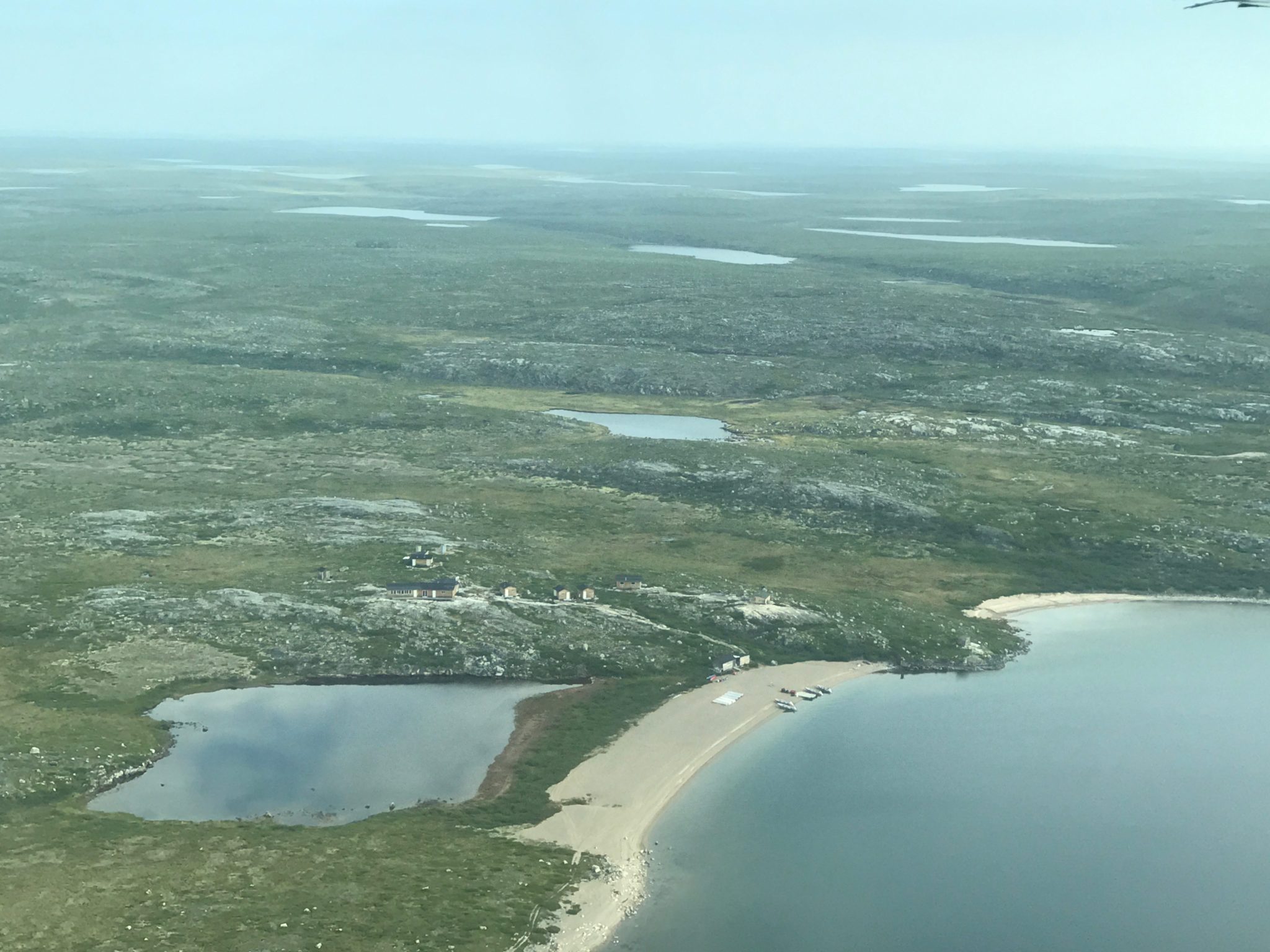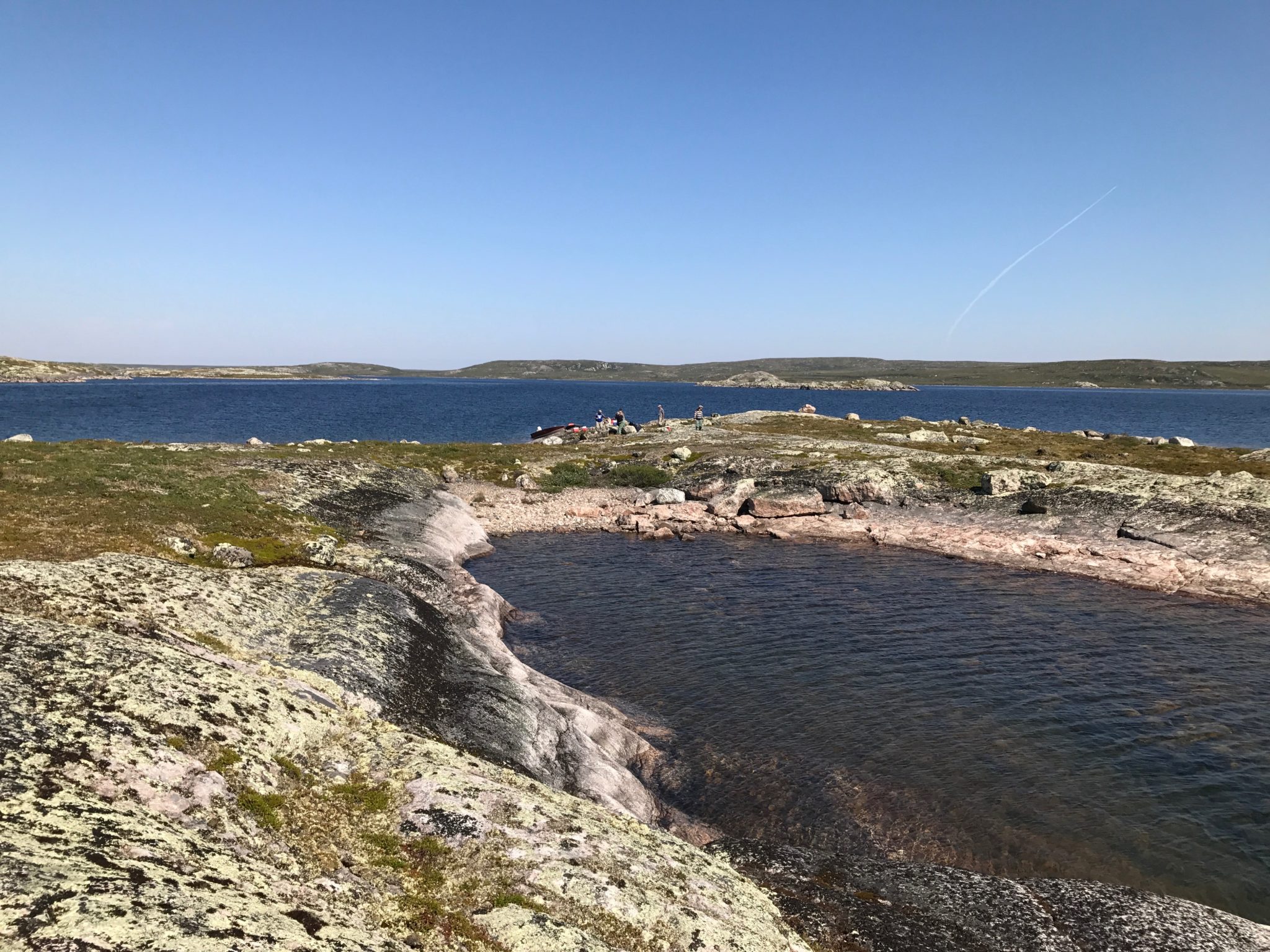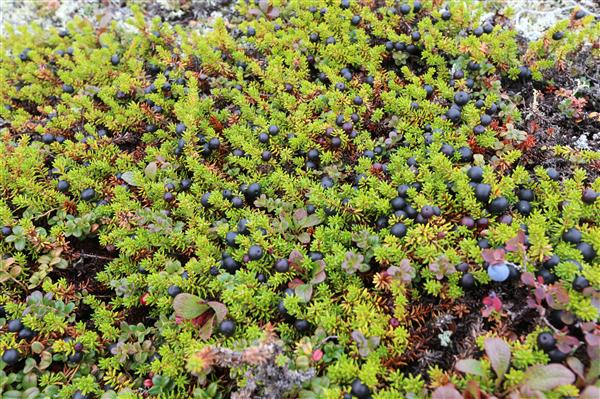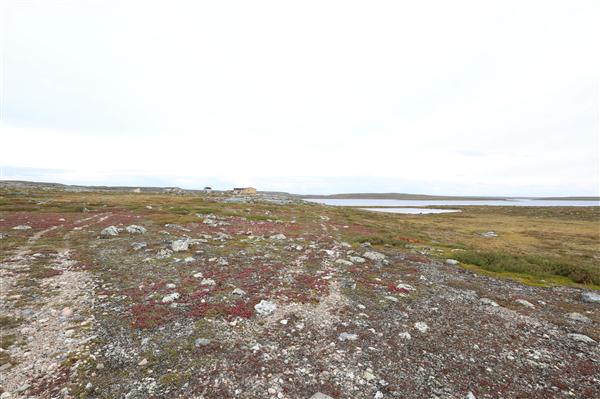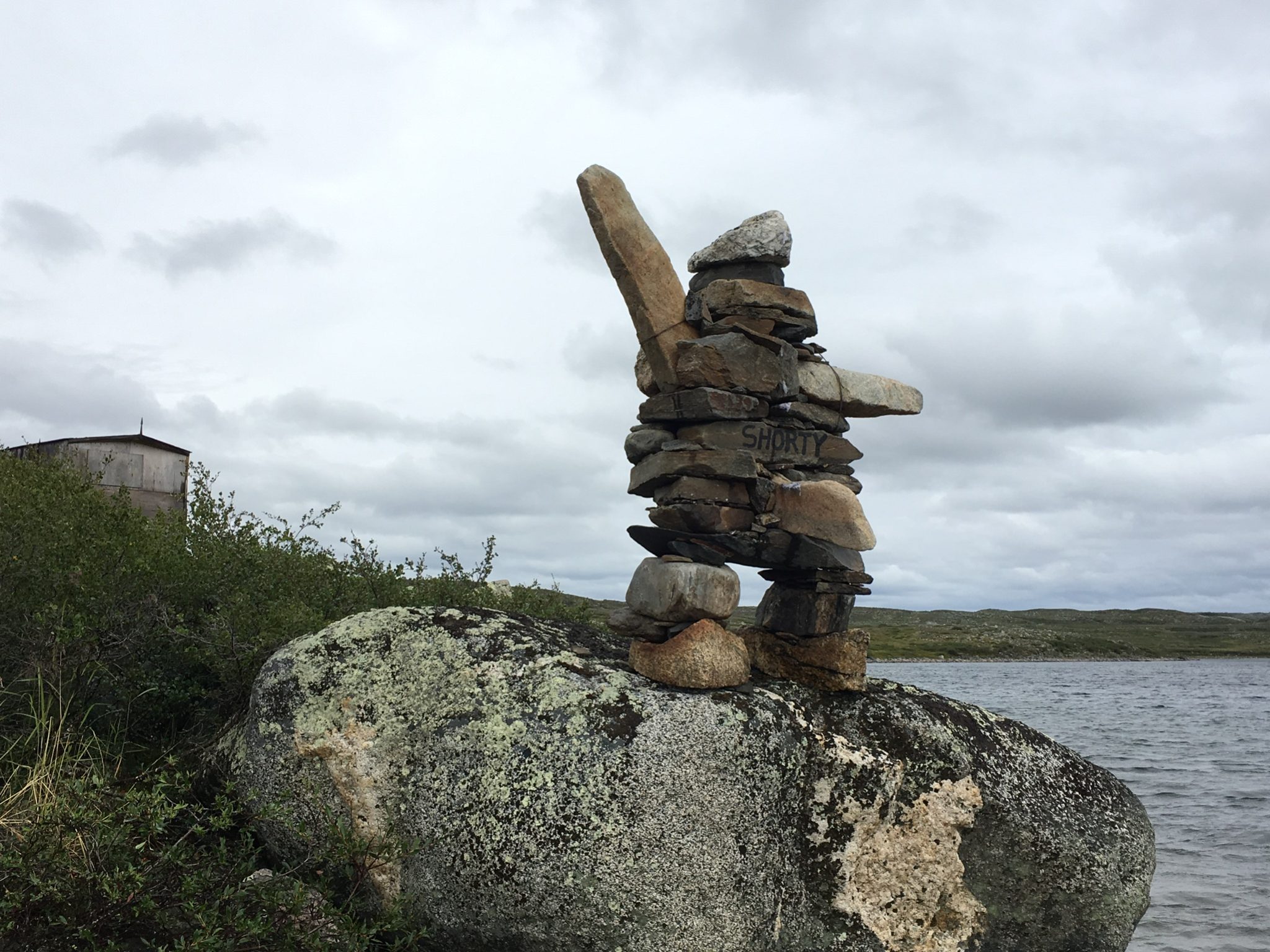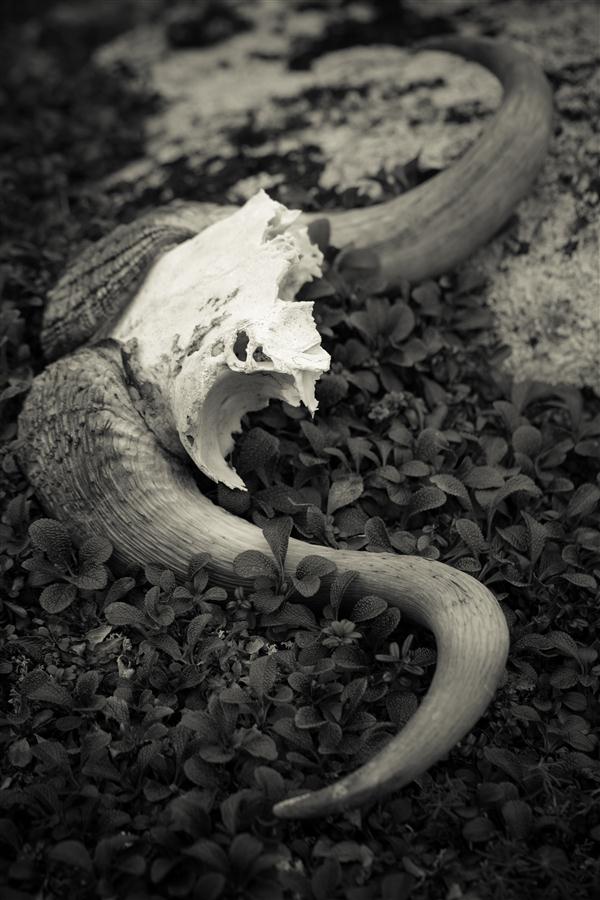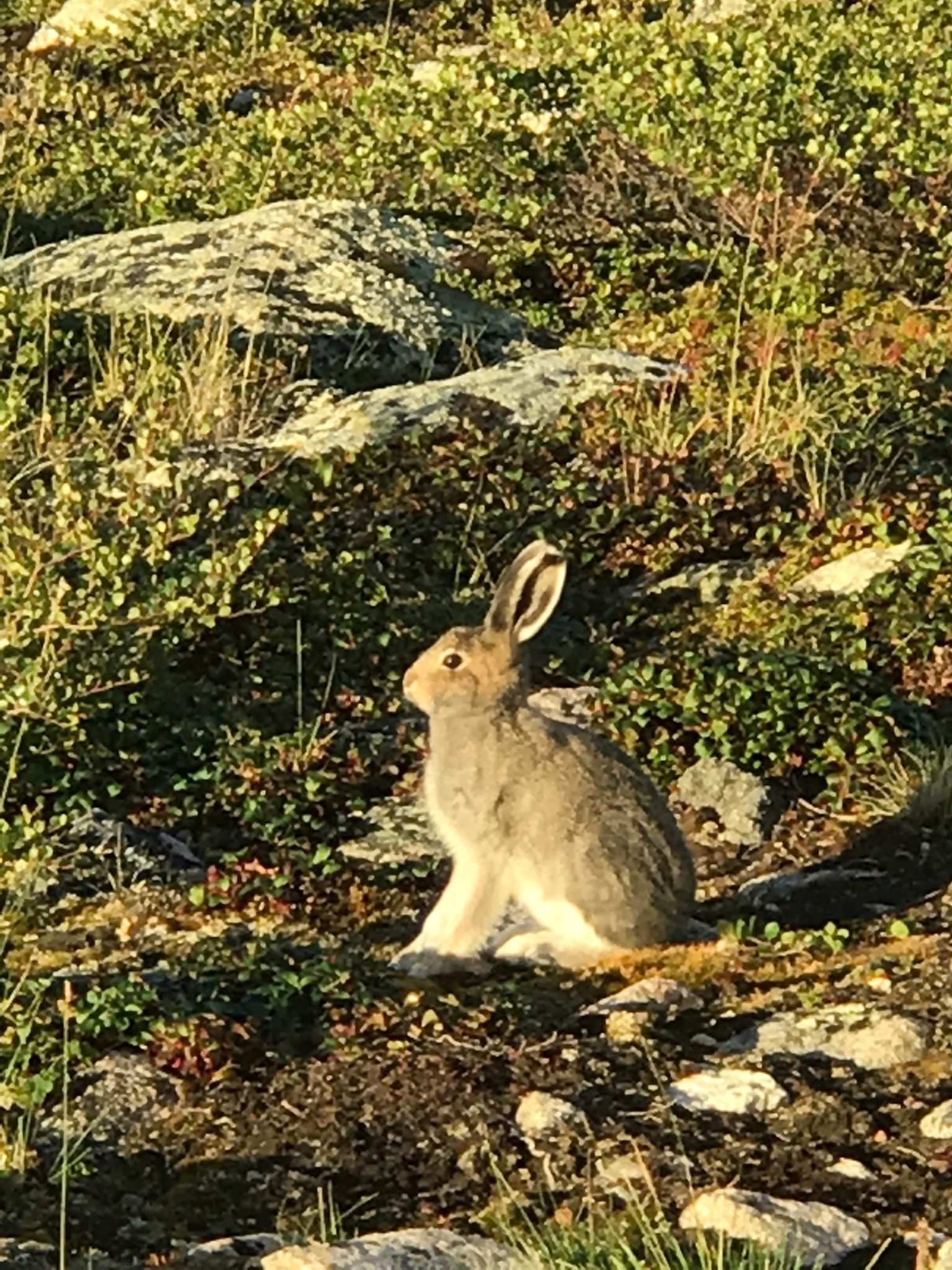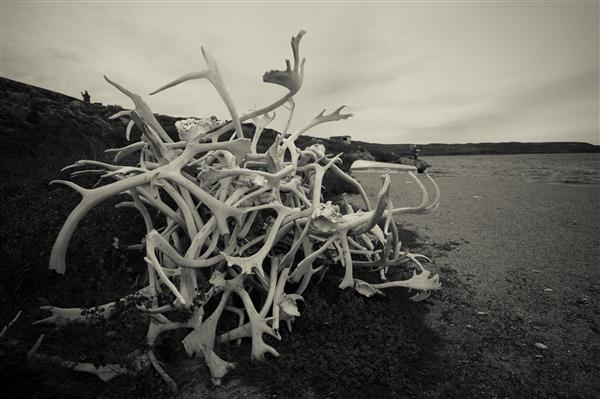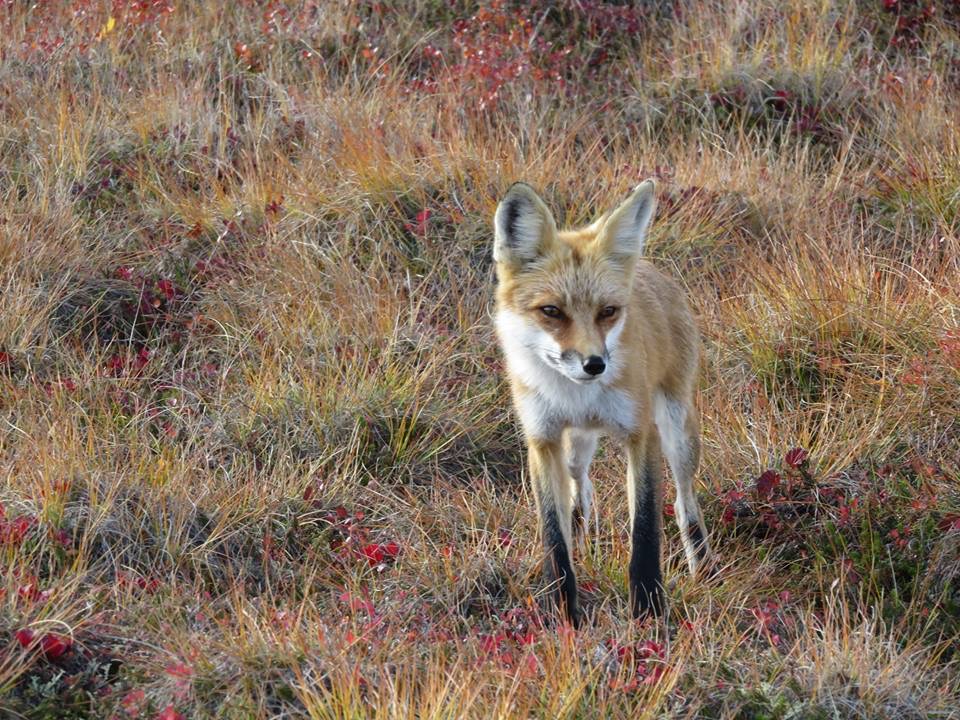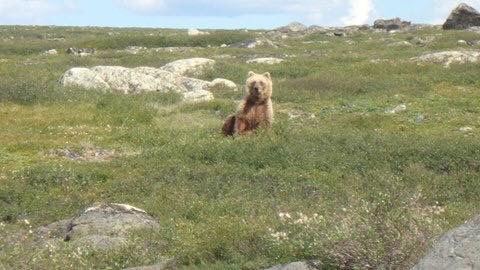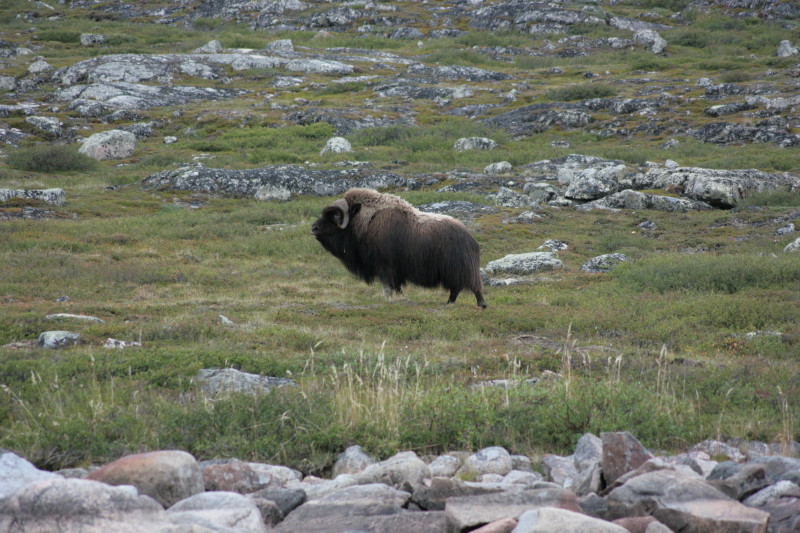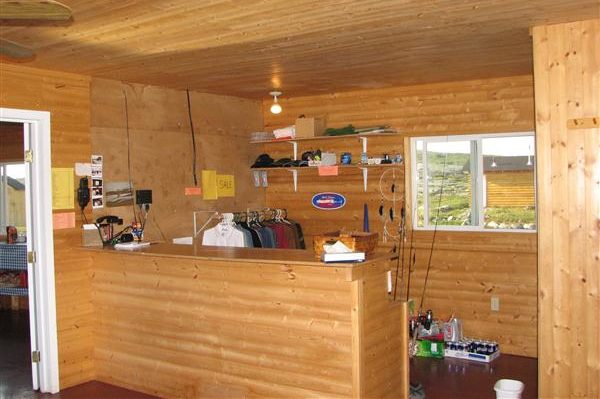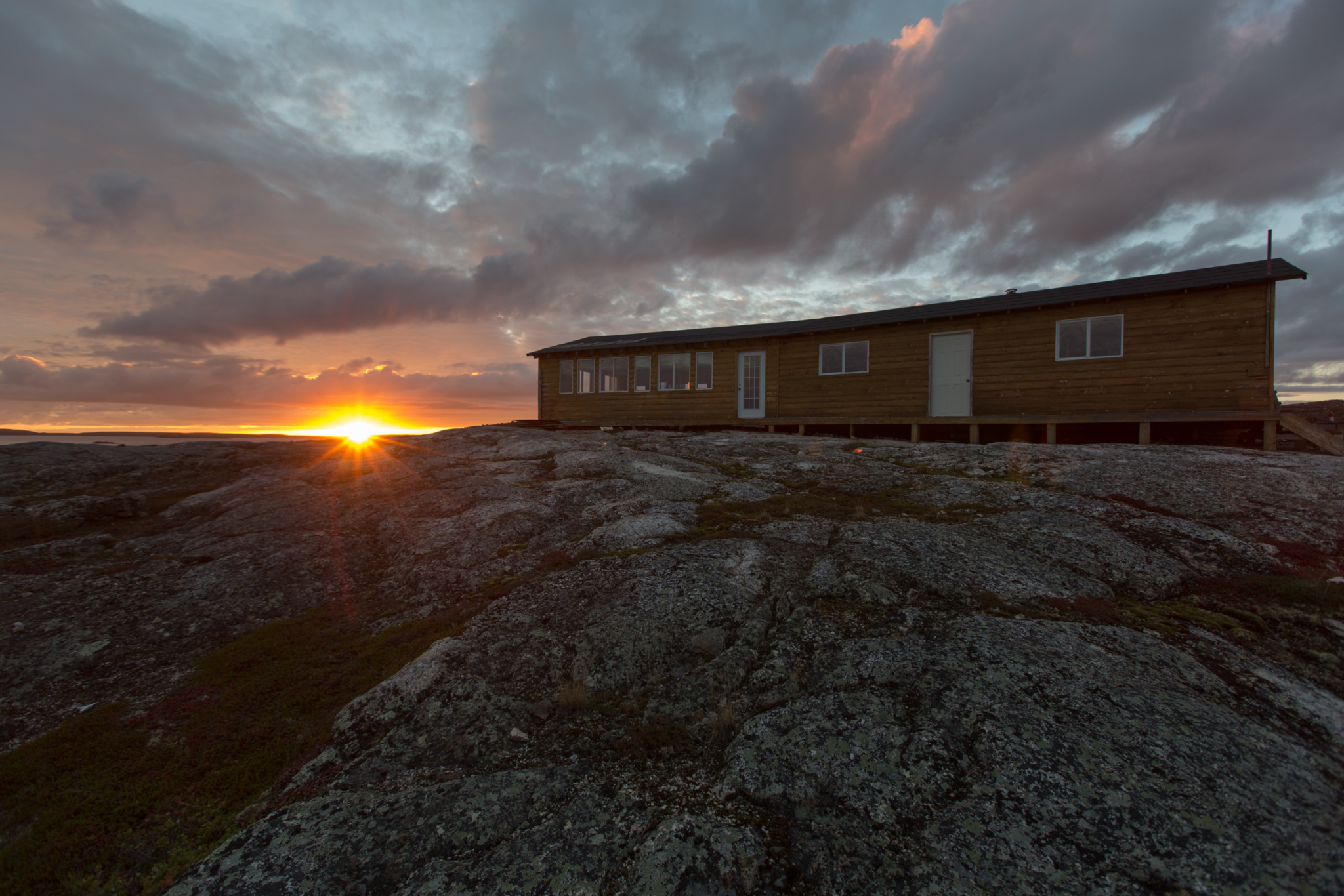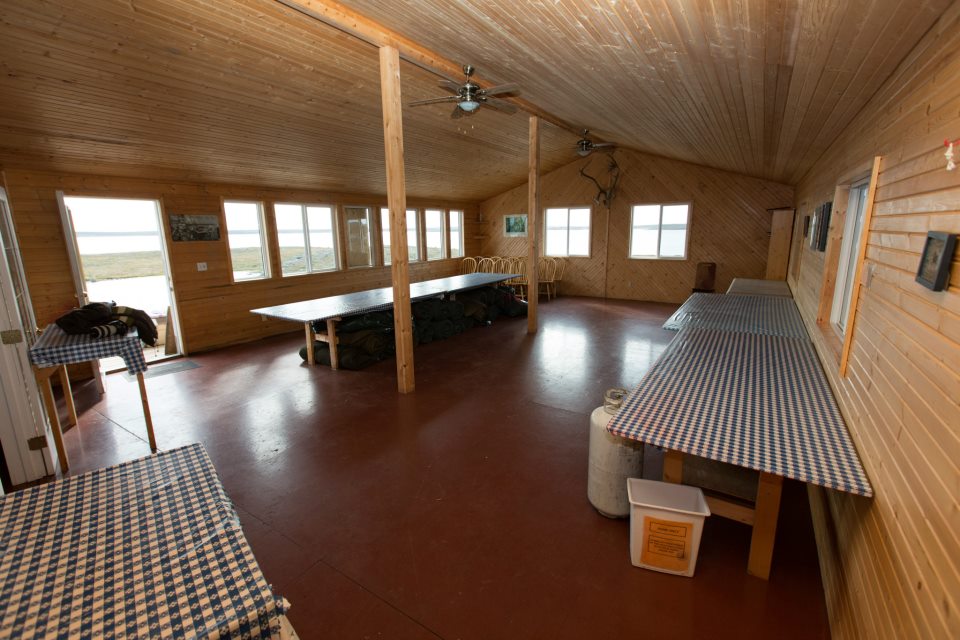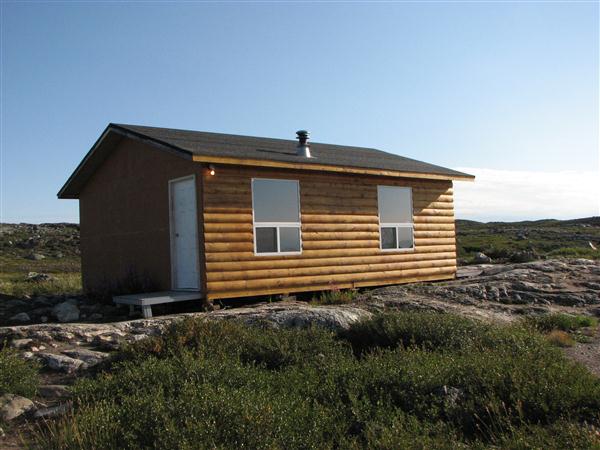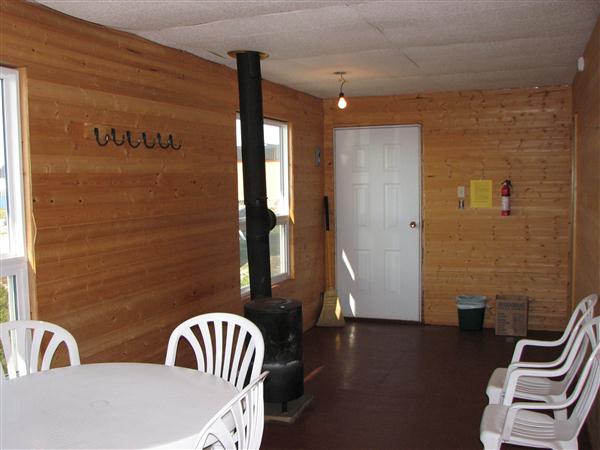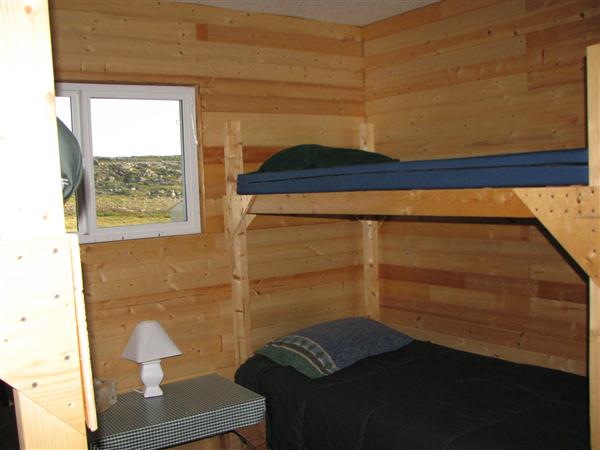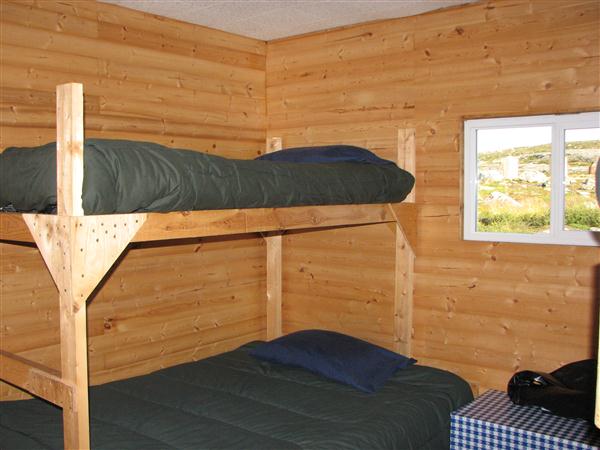What To Expect
The Terrain
The Tundra
What is the magic of the Tundra?
It is a location that starts at approximately the 60th to the 75th degrees latitude and is found along the arctic coast of North America as well as the coastal region of Greenland. There are three types of tundra that exist, we are located in the arctic the other two types are alpine and Antarctic regions. The three locations share similar characteristics such as cold and a drier climate, which is why they are called Tundra.
The Tundra is a unique biome that is known for its permafrost and the lack of trees. People instantly think barren lands as there are no trees. Like the desert an uninviting landscape that has been used in enough movies to create an innate scary feeling. This is so wrong. If you live and learn the cycles of the Tundra or the Deserts there is so much life happening in these unique areas.
The Tundra has a very fast cycle of maturation in the summer months as their summers must accomplish significant activity to sustain the animals and people who choose to call this region home. The land is teeming with small shrubs that produce berries and they are delicious. The entire tundra where we are located is beautifully green with so many interesting rock formations, eskers and sandy beaches to walk on with large lakes and rivers to traverse.
We do get all the weather systems that you will experience in your home area. We can get raining days, very hot days, and winds that blow the storms in and out. We have, when we arrive at the beginning of July, 24 hour day light. This daylight is key to the incredibly fast growth of all the plants located on the tundra. Until mid August we can see great distances in the twilight hours. Once we hit the mid August date, we are dark at night. When the shorter days arrive you see the tundra plants full of ripening berries that the animals and humans feast on. Then one day the mushrooms begin to pop up and their growth is incredible over night, again these are a source of food for the animals. The mushrooms can be as large as a dinner plate. The Arctic ground squirrel known as a Sic Sic feast on the mushrooms along with other animals found in the arctic.
The tundra is treeless due to the harshness of the climate and the conditions such as the short growing seasons. The tundra is the coldest of all the biomes found on Earth. There is also very limited soil in the Tundra region. The Tundra is covered by huge rocks because it is part of the Canadian Shield and where the Caribou moss is found and grows in the arctic. The Caribou
Moss looks like a foamy, gray-green spongy mass that grows to about 1-4 inches all over the tundra. The arctic moss lives longer and grows very slowly. It is the slowest growing of any freshwater plant in the world. Arctic moss can live up to 10 years.
The July colours offer so many hues of green to silver in the trees, grasses, moss and the lichen located on the tundra. There are animals that feed on the grasses, moss and lichen that helps them get the nutrients to sustain them in the arctic climate. When we head into mid August you instantly see the change to fall marching forward and by the end of August into September the Tundra turns to Reds, Golds, and Oranges that take your breath away with the beauty of seeing these colours for miles and miles. The pilots that fly the North are so lucky to enjoy these spectacular fall colours as they move people and freight across the Tundra.
Even the animals like the Muskox are ancient animals that walked the Tundra with the woolly Mammoths. The fish in the lakes are predominantly Lake Trout and Arctic Grayling where we are located. The fish grow approximately 1/4 to 1/2 an inch per year as a result of the cold arctic water lakes they live in. The lakes are full of fish as their is little to no fishing pressure due to the remoteness of the barren lands and the difficulty travelling in the Tundra. Your are limited to the historic bush planes on floats and once you arrive it is your feet and if there are boats to travel the waterways.
The lichen on the Tundra is an organism that is partly of a fungus and an alga and/or Cyanobacteria in a symbiotic relationship and can be found all over the rocks at our lodges. The lichen located at our lodges is between 10-15 thousand years old, according to the
geologists that have travelled and stayed at our lodge. When you travel to vacation with us you are remote the only way in or out is by float plane and you have left the treeline many miles away as you make your way to our lodges.
Biodiversity on the Tundra
We are all from areas on the globe that provide an abundance of plants, animals, and birds because our eco system is more conducive to supporting high numbers. In the Arctic Barren Lands the eco system does not provide the elements that allow high density of plants, birds and animals.
The Tundra produces 15%-50% less of the solar energy that the northern edge of boreal forestdoes. The growing season is limited to 2-4 months and the rest of the year it is a frozen harsh environment. This truly limits the numbers of species that can thrive and survive. The precipitation is far less about 4-7 inches of total precipitation per year. It’s incredible that 30% of Canada geography is located North of the treeline, with half of the tundra being North of the 60 on the Arctic Islands.
The animals you will find on the Tundra are the Caribou, Muskoxen, Arctic Wolf, Arctic Fox, the Wolverine, Arctic Hares, Arctic Ground Squirrels (Sic Sic), and the Arctic Grizzley Bear. The Muskoxen roamed this area with the Hairy Mammoths and the Caribou migrate through the tundra to move between their winter and summer calving grounds.
The plants have adapted to thrive and survive through some of the shortest growing seasons in the world. They have adapted to find their spots that they can adapt and survive in. The severe environment only allows a few selected species to succeed on the Tundra. Of the 3200 species of mammals only 23 succeed above the treeline on the Tundra. Of the 8600 bird species only 6-7 birds live year round on the Tundra and only 70 species use the Tundra for their breeding grounds. There are 400 plant species and this is not counting mosses and lichens that thrive in the southern tundra. Out of the vast diversity of insects only 600 species succeed on the Tundra.
The number of Tundra species are smaller than in a tropical setting, the numbers of each individual one can be huge. When you look to productivity of animals on the Tundra you must consider the numbers of Carnivores and that leads us to the Arctic Wolf, the Arctic fox, the Arctic Grizzley bear and the wolverine. These continue to flourish on the Barren lands because their predication activities are on the caribou, the muskoxen, and each other if starvation is
near opportunity knocks.
The landscape that helps these species survive is riddled with interesting formations. The huge rocks that are split in half because water got in and froze and forced the rupture. The contures of the land formed by the all the water rivers as the ice melted has left massive rocks balanced on top of small rocks, defying gravity. Rocks that are 9 stories high, and rock piles built with boulders bigger than any group of men could move. Beaches that run for miles uninhabited
with a high possibility that no man has walked on. To watch hundreds of baby Loons running on top of the lake water, because they have mastered displacement and utilize it to move faster across the lake. Adult Loons who never stand on land because their legs are placed too far back to allow them to balance on land. Nesting pairs of Peregrine Falcons who are considered in low numbers use the arctic tundra to have their young ones and jump off of the huge rock formations where they nest to learn to fly while the parents circle watching over them, a photographers dream awaits.
This is why the barren lands are a must see for the adventurer who wants to experience a truly unique area of Canada that less than .0001 Canadians have ever been to see. Where the midnight sun burns bright and long, and where the Aurora Borealis are incredible because there is next to zero pollution. Where the lakes are teaming with fish that are eager to bite a line and chase each other into the net. Where you take the barbles hook out of the mouth of a trout
and you wonder why on earth it took your line when you can see the tail of the fish it has just eaten in its mouth. We have 7 sub species of Lake Trout in our waters and many have grown to be huge. It is not uncommon with 5 boats on the water fishing to catch 6-8 fish over 40 lbs. We catch at least 6-8 fish over 50lbs in a season and our largest to date is 67lbs. We are a catch and release fishery because we want our lakes to produce large fish for generations to come.
We at Canadian Wildlife Adventures provide opportunity to truly explore the wonders of the Tundra. There is something for every adventurer. If your adventure is photography, there is thousands of opportunities to catch multiple images of unique landscapes plants, birds, animals and fish. If your dream adventure is to catch large Lake Trout and Arctic Grayling you can do that at our lodges. If your dream is to view incredible animals unique to the Tundra in their natural setting we can make that happen. If your adventure is to hunt animals on the Tundra in the fall or winter we can make that happen for you. If. Your adventure is to travel by canoe on a 14 or 17 day trip we can make that happen for you, you arrive at one lodge and arrive at another lodge.
We are a company who is about sustaining and caring for the environment we choose to do business in. We chose the Tundra because of its biodiversity, its remoteness and its ability to offer adventure trips for Eco Tourism, Fishing and Hunting. We want to share the Northwest Territories Barren Lands with the world, come see it through our eyes, you will be exposed to a truly unique environment that will expand your horizon.
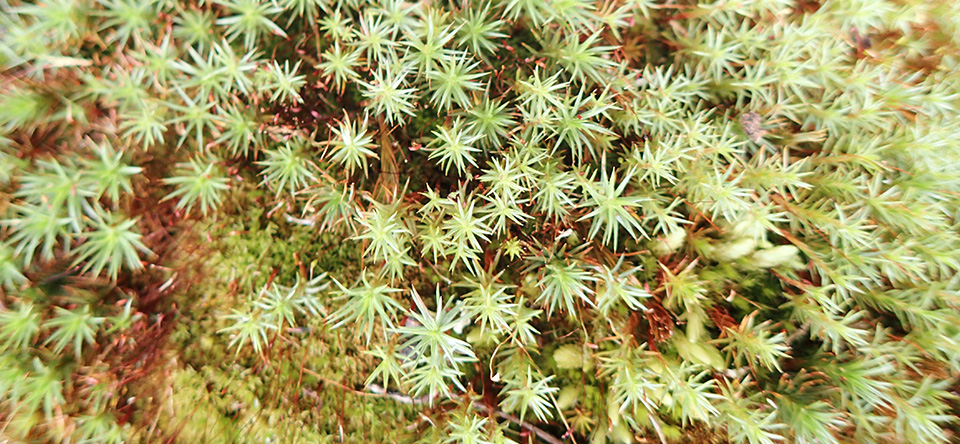
Arctic Moss
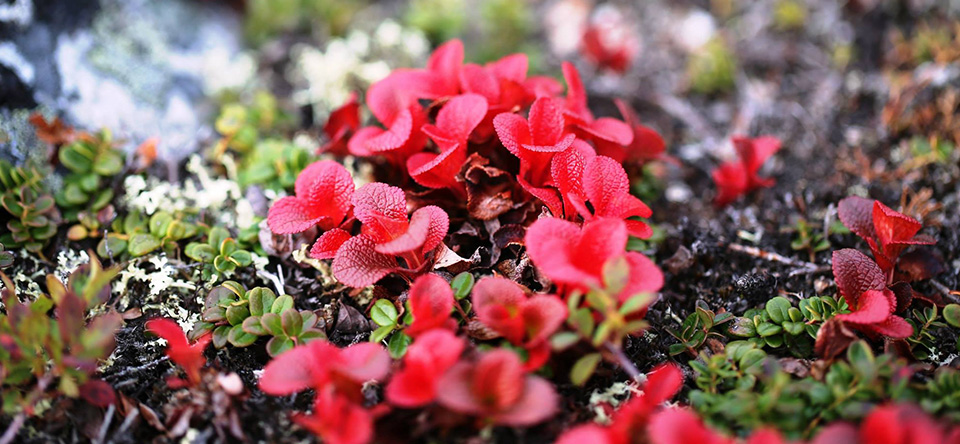
Bearberry
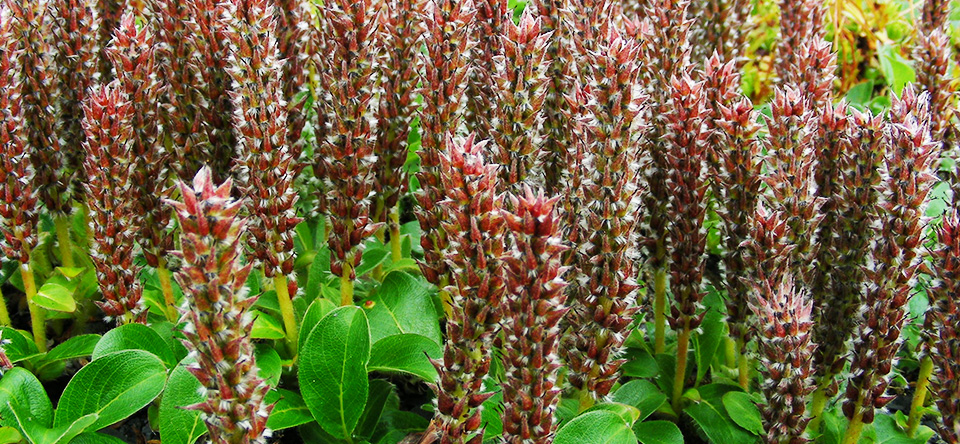
Arctic Willow
Plants located on the Tundra
The tundra is located in the Low Arctic region in the Northwest Territories (NWT) and is located in the Northeastern half of the NWT. The area is dominated by shrub silver birch, Blueberry shrubs, cranberry shrubs and cloud berry plants, cotton grass, and Caribou moss. There are tiny plants that form a soft green carpet each spring, there is the cotton grass, and the Caribou moss that all have flowers that bloom. There are thousands of low bush cranberries, tiny shrub blueberry plants and there are cloud berries and they all have blooms and are all plentiful on the barren grounds.
We are treeless not because the trees can’t survive the temperatures, but because they grow tall and the temperatures up high are 7-8 degrees colder then on the surface. Unfortunately, the chemistry of the “green magic” happens at ground level where the temperatures, the moisture, allow for enough photosynthetic, “green magic” to happen. Where the plants can under go the
chemistry needed to survive and thrive in the tundra climate. You will only see a few taller trees we see them as small when they are in the sheltered spots that create the right place to allow the tree to survive but unfortunately not thrive like in the forested areas.
Ecologically, if you are talking about the Tundra you are talking about a wet desert as opposed to the dry deserts that are in the world. The Caribou mosses allow moisture to be held through the dry desert conditions due to lack of precipitation. The Tundra does not receive lots of snow, the caribou, muskoxen and other animals depend on the lack of deep snow to survive the
winters by digging down to the foliage on the ground.
In the winter of 74-75 there was an anomaly winter where there was freezing rain on the tundra and about 75% of the Canadian muskoxen died because they could not get through the ice covering their winter foliage on the ground. The Arctic ground squirrel known as the Sic Sic in imitation of their call hibernate so they look for the areas where snow will drift to provide the insulation for their burrows to survive.
When you look at the overall BTU of the tundra it gets between 50% to 15% as much solar energy as the northern edge of the Boreal forest. Not only is the solar energy significantly lower it is over a very short growing season of 2-4 months at best. This shortens the growing season and limits the “green magic” needed for plants to survive and thrive in this climate zone. In the growing season there is very little temperature change and the ground temperature is several degrees higher than about a meter up in the air.
The petals of the Arctic Avens form a near perfect parabola that reflects and really focuses the sun’s energy onto the flowers reproductive parts to ensure the process is moving fast to match the march of time on the tundra. You will find more insects when you walk through the flora and fauna because the insects have figured out that more heat is being generated close to the reproductive areas of the plants. Some of the plants grow in live and dead vegetation that helps insulate them to gain the temperatures they need to thrive and reproduce. There is Willow Herb a close relative of Fire Weed on the tundra as soon as the ice melts and the
daylight increases you see these plants popping up. The Lapland rosebay a relative of the Rhododendrons is a smaller version that decorates the tundra in the low arctic tundra. There is so many plants that have adapted and provide beauty through the spring, summer and fall, the barren lands are definitely not barren. The species are far fewer than in other areas but they are
no less dramatic or beautiful on the barren grounds of the NWT.
There are arctic grasses that grow and it is fun to watch the arctic hares eating the tall grasses. There is historical evidence that the cotton grass was used to fill up bedding to create a softer place to lay on for your nights sleep. It is beautiful to see the grass with the top being a white cotton ball dancing in the breeze.
The Cyanobacteria (blue-green algae) that produced stromatolites were responsible for the first oxygen into the Earth’s atmosphere and this plant is found living with the lichen in our area.
Think about that, the beginning of time, the ancient life of the Tundra. The word Tundra is actually a Russian term that means a rolling treeless plain. Hence the name barren lands, the truth is it is treeless but not barren!
There is silver birch to be found everywhere on the barren lands. They provide an excellent wood for smoking the fish caught in the lakes. The silver birch is plentiful but small due to the lack of good soil for them to take root in. They grow on the nooks and crannies of the rock formations along the waterways where the blowing winds and the snow run off allow small amounts of soil to accumulate. It doesn’t matter where you cast your eyes you will see vegetation thriving in their arctic setting. Plants like humans adapt and create changes to ensure they survive wherever they are located.
The blooms are small and delicate on the Tundra but they are plentiful. It is always exciting to get up each day and investigate because the march of the season is so fast you can see the changes daily. There is not many locations in the world where you can visually see changes in the plants daily, it is normally measured in weeks.
As the fall colours are about to approach, the Tundra starts to see mushrooms popping up everywhere so many different kinds and some as large as dinner plates that the rabbits, birds and ground squirrels feed on. Anyone investigating mushrooms and what they add to the diet will be amazed at how many nutrients for the tundra animals are found in the mushrooms.
As fall arrives the Tundra changes to the Golds, Reds, and Oranges that signify the arrival of the end of the summer on the Tundra. You will be hard pressed to find a place in the world that produces such a brilliant fall foliage that stretches as far as the eye can see.
The plants are small, the flowers are tiny, but the sheer numbers create a beautiful plumage for the Tundra which is wrapped up in the fall crescendo of the magnificent fall colours displayed until the snow arrives on the Tundra.
ESKERS
Eskers are located throughout the Northwest Territories (NWT) and they are animal traveling highways. The Theron Esker in the NWT is the longest esker and it stretches to about 700KM across the tundra. These eskers were formed over thousands of years.
What is an esker?
They were formed when the glaciers receded and they were formed by the meltwater tunnels under the glaciers as they melted away. They are made up of sand and gravel and you can liken them to similar to your nose on your face. They are a sinuous ridge that has been craved out for the water to flow under the glaciers as they receded. When you
are flying you can see them as you move from the tree line and into the barren lands. The barren lands are for us where the magic begins.
There are two types of eskers that were formed there is the broad crested meaning a more flattened version of the sharp crested sinuous ridge type. The shape and size of the eskers were determined by the water pressure that was created under the glacier in relation to the overlying ice.
How do you identify an esker?
They are a long, narrow and winding ridge made up of sand and gravel that has been deposited by the melting of the glaciers as they receded across the NWT.
Eskers are not unique to the NWT they can be found in Ontario as well as the NWT. Wherever there were glaciers, the melting of the glaciers and the consistency of the land underneath created eskers as an efficient way to allow the water underneath to flow. They can be from a few kilometres to as long as the Theron at about 700km. The second longest esker is found in
Ontario and is approximately 250km long.
Eskers have long been an important piece of bush pilot flying as the broad crested eskers are great as a natural landing strip in remote areas.
The Canadian Shield is the oldest landform region in Canada, so when we say to you that you will be walking on some of the oldest landforms in Canada we are telling you the truth. We are blessed to have our lodges located within some of the oldest landforms in Canada.
Canada has 7 landforms that make up our country and our lodges are located on the Canadian Shield formation, there are the arctic lands, the Hudson Bay lowland, the Interior Plains, the Cordillera, the Great Lakes-St Lawrence lowlands, and the Appalachian Uplands. We are truly blessed to be in a country that has such unique identifiable landforms. The Canadian Shield landform is recognized all over the world as a historic formation.
The Wildlife
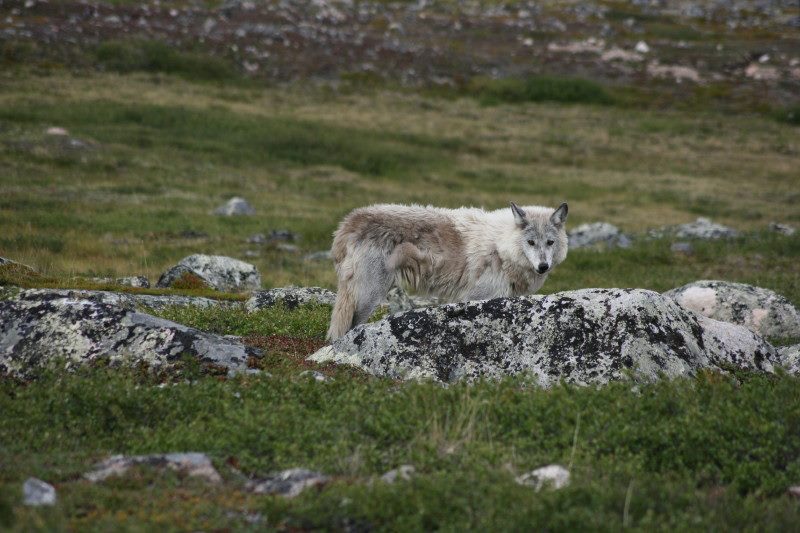
Tundra Wolves
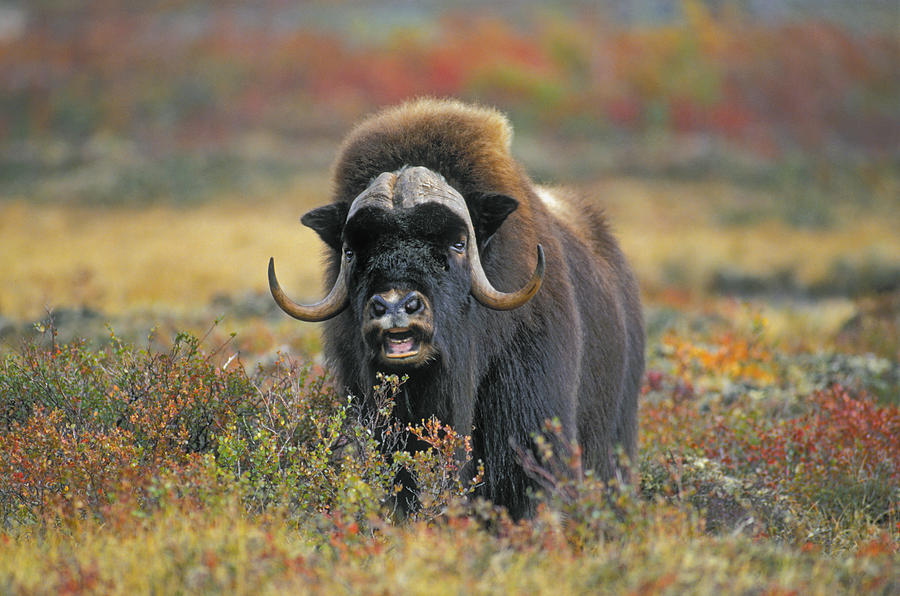
Muskox
Muskoxen are generally found in the inland plains or river valleys of the Arctic, where shrubs are most abundant. This is rich forage for muskoxen, caribou, and lemmings.
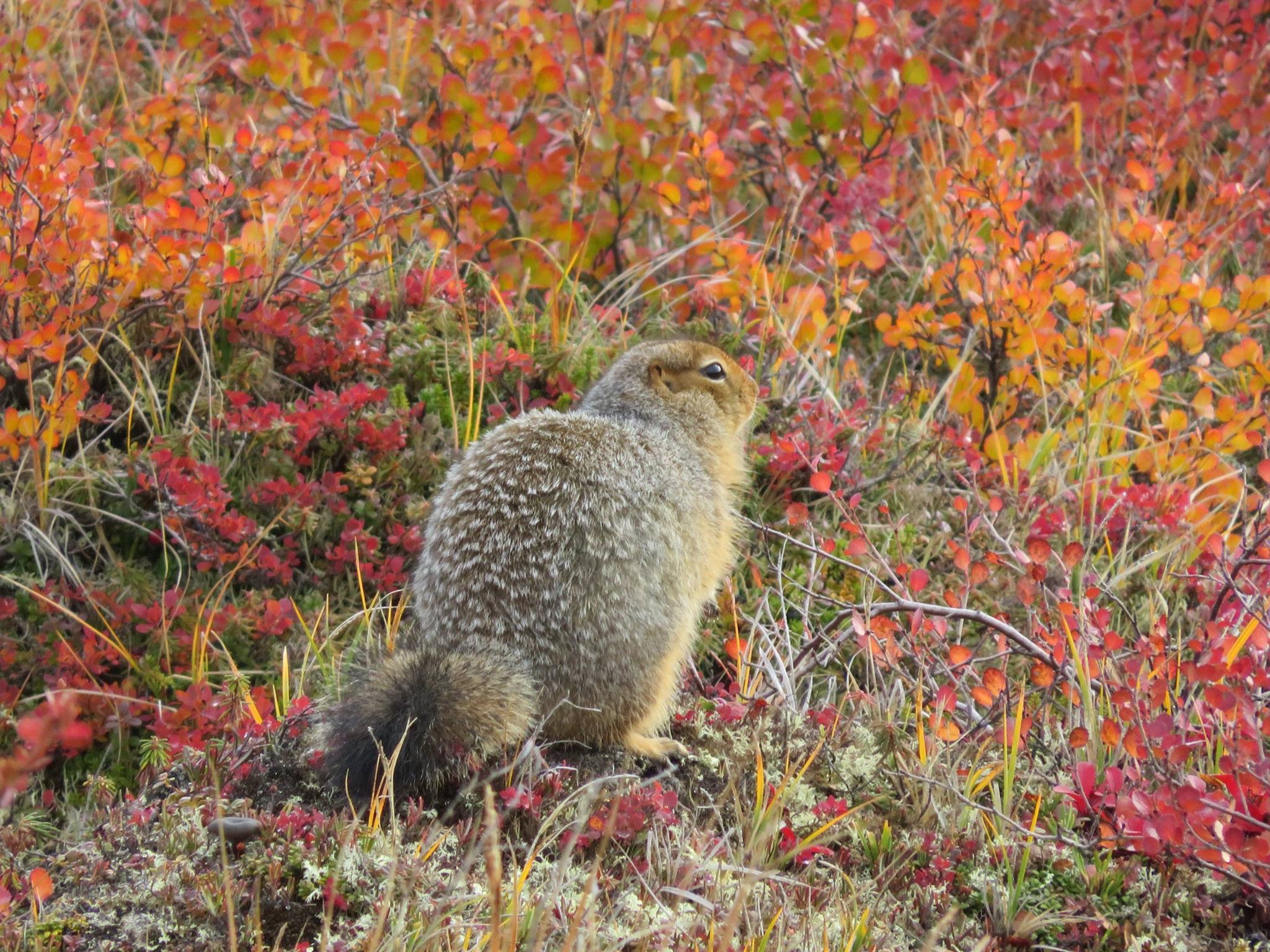
Arctic Ground Squirrels
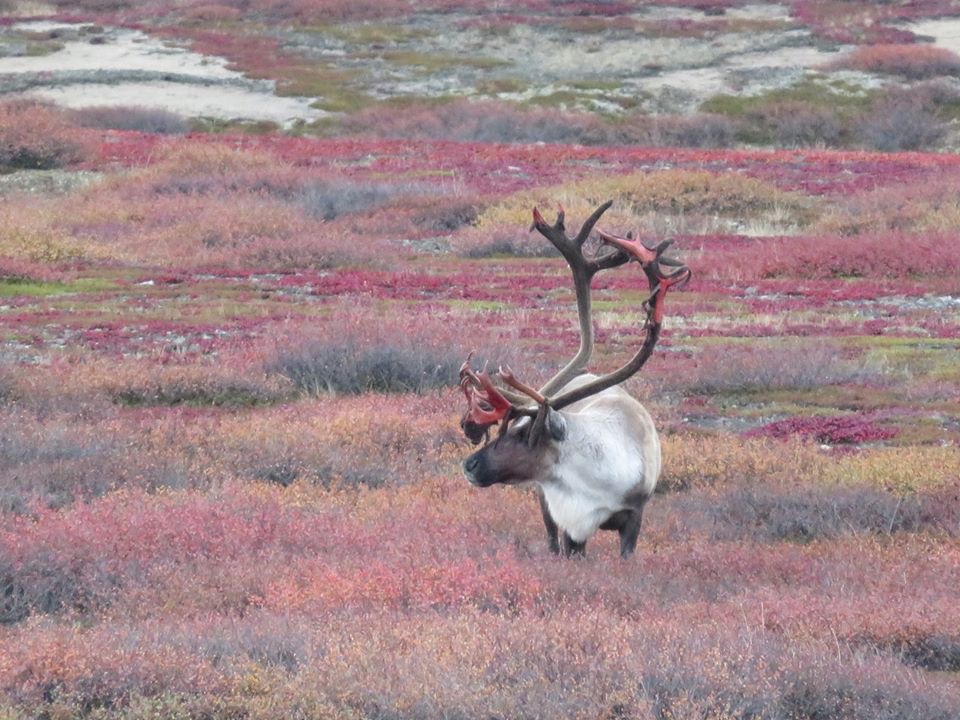
Caribou
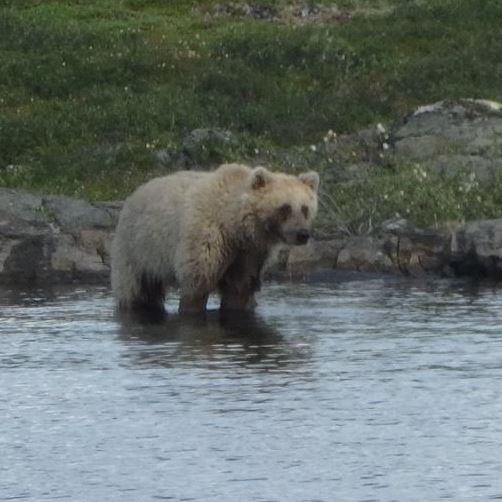
Barren-Ground Grizzly Bear
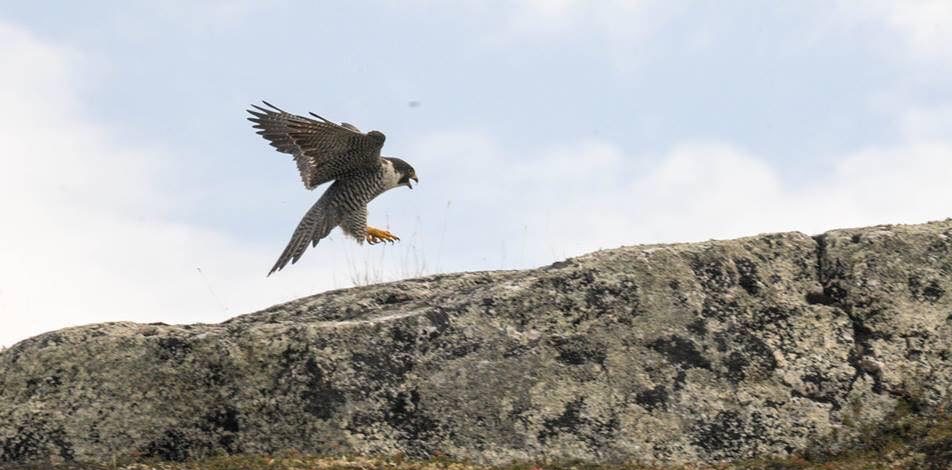
Peregrine Falcons
The Weather & Climate
Welcome to the land of the midnight sun.
The true beauty of Mother Nature is on display at Aylmer Lake. Being so far north, you need to be prepared to handle the weather that comes our way.
| Weather Statistics |
June |
July | Aug |
Sept |
| Average Low: (C/F) |
9 |
13 | 11 |
4 |
| Average High: (C/F) |
19 |
22 | 18 |
11 |
| Average Rainfall (mm) |
11.2 |
15.3 | 22.1 |
21.2 |
| Average Wind (km/h) |
13 |
12 | 13 |
13 |
While the climate appears quite temperate, sudden winds can bring temperatures down and there’s no predicting how much rain, if any, will happen while you’re here.
For current weather information for Aylmer Lake Visit Meteroblue
The Lodge
“This is a great surprise” is the expression most often heard when guests enter the main lodge. Soaring beams, warm wood and spectacular scenic views are here to enjoy during your stay. With over 3000 square feet of space, it invites you to spend a little time relaxing with friends. You can count on being comfortable and welcome.
Sq. Ft. Lodge
Here's what is waiting for you:
Wi-Fi is available in cabins and in the Lodge
Telephone and a satellite phone in Lodge
Hot Showers
Thermostatically Controlled Heating
Board Games, cards and books
Items for purchase at the lodge
- Fishing Licenses
- Alcohol
- Tackle / Equipment
- Small Toiletry/Personal Items
Accommodations
Each Cabin Sleeps 4 Guests
Furnished Cabins
Thermostatically Controlled Heating
Guest Capacity Per Week
The guest cabins are set up to accommodate four guests, and each offers comfortable beds, thermostatically controlled heat and a sitting area.
Because Aylmer Lake Lodge is truly dedicated to the satisfaction of each guest, we have structured occupancy of just 20 guests per week. Every detail is attended to by our staff to make your trip a memorable one.
Your Next Cabin Adventure is Waiting...
EAT WELL.
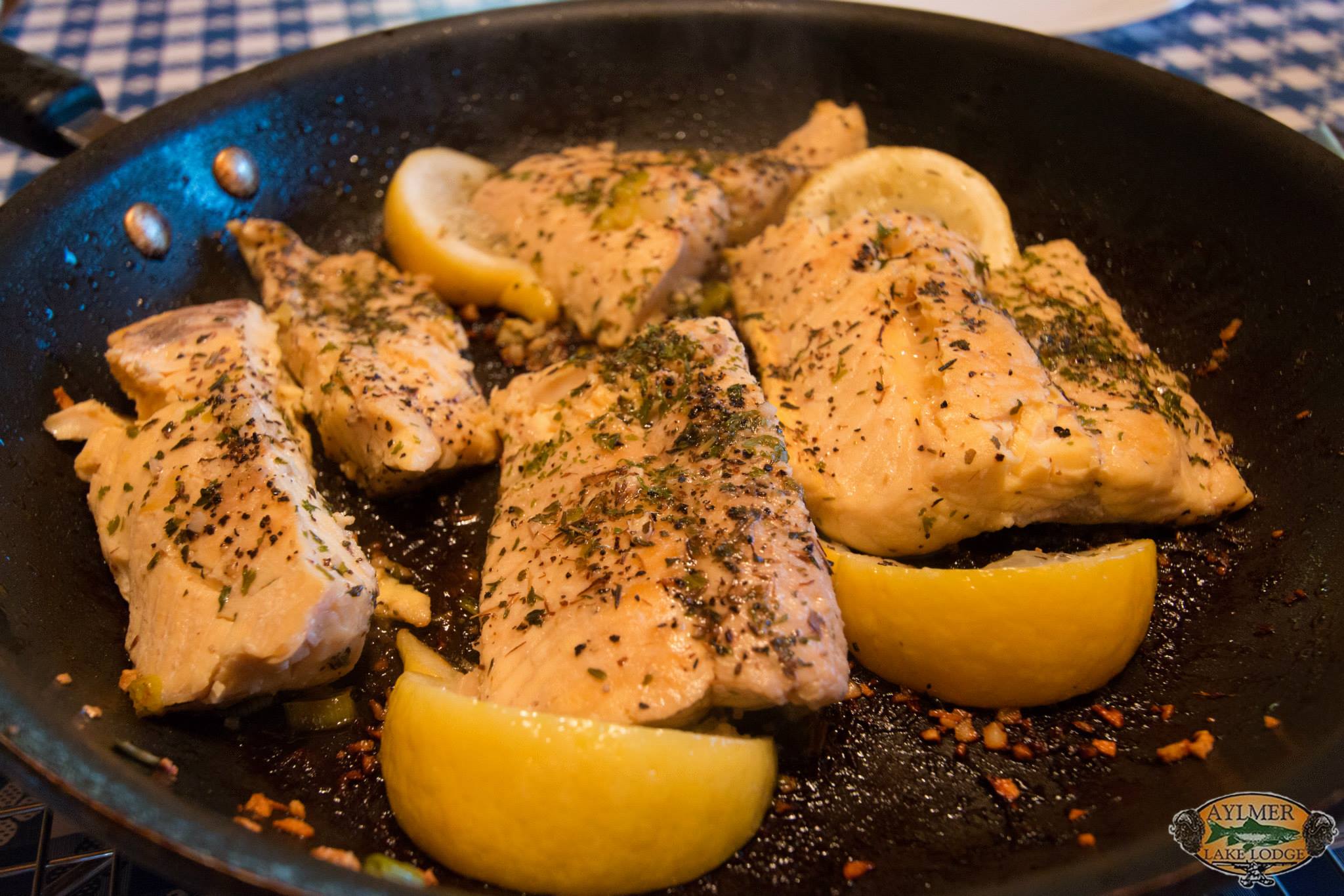
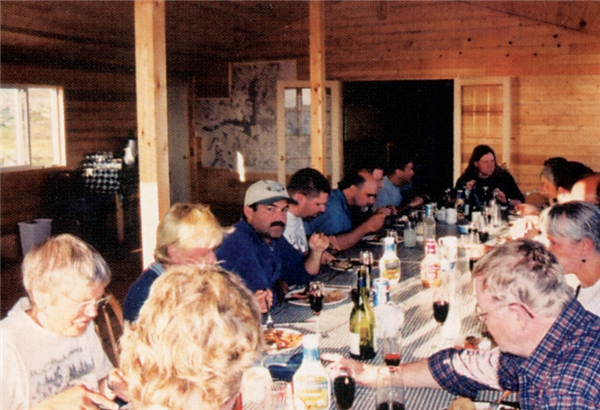
Hearty home-cooked breakfasts and dinners await you at the Lodge every day of your stay. Breakfast is at 7:00 am and supper is at 6:30 pm in the Tundra Room. Your mid-day meal is a shore lunch packed for your enjoyment.
Have a special request? Food Allergies? We will do our very best to accommodate you.

Recipes
Charred Lemons to serve with Trout Dishes
Ingredients Sea Salt Grape seed or Avocado oil 1/2 lemon per person Heat grill or cast iron fry pan to medium-high heat (you should be able to hold your hand about an inch over the cooking grate for 3 to 4 seconds). Scrub lemons with soap, then rinse and pat dry. To...
Cajun Fish Crisp
Adjust for the number of pieces you are cooking. This is a pre-mix called Rocky Madsen’s Fish Crisp seasoned coating. Ingredients 6-8 ounce fillets of trout Juice of 2-4 fresh lemons Salt and pepper 2-3 cups flour to coat fish 4-6 eggs 2 tbsp mayonnaise Rocky Madsen’s...
Panko Lemon Dill Fish Fry
Adjust for the number of fillets you are cooking Ingredients 6-8 ounce fillets of trout Juice of 2-4 fresh lemons Salt and pepper Then dip into 2-3 cups flour to coat fish 4-6 eggs 2 tbsp mayonnaise 4 cups Panko Coating 2 tbsp dry dill weed 2 tbsp dry thyme ...
Getting to Us
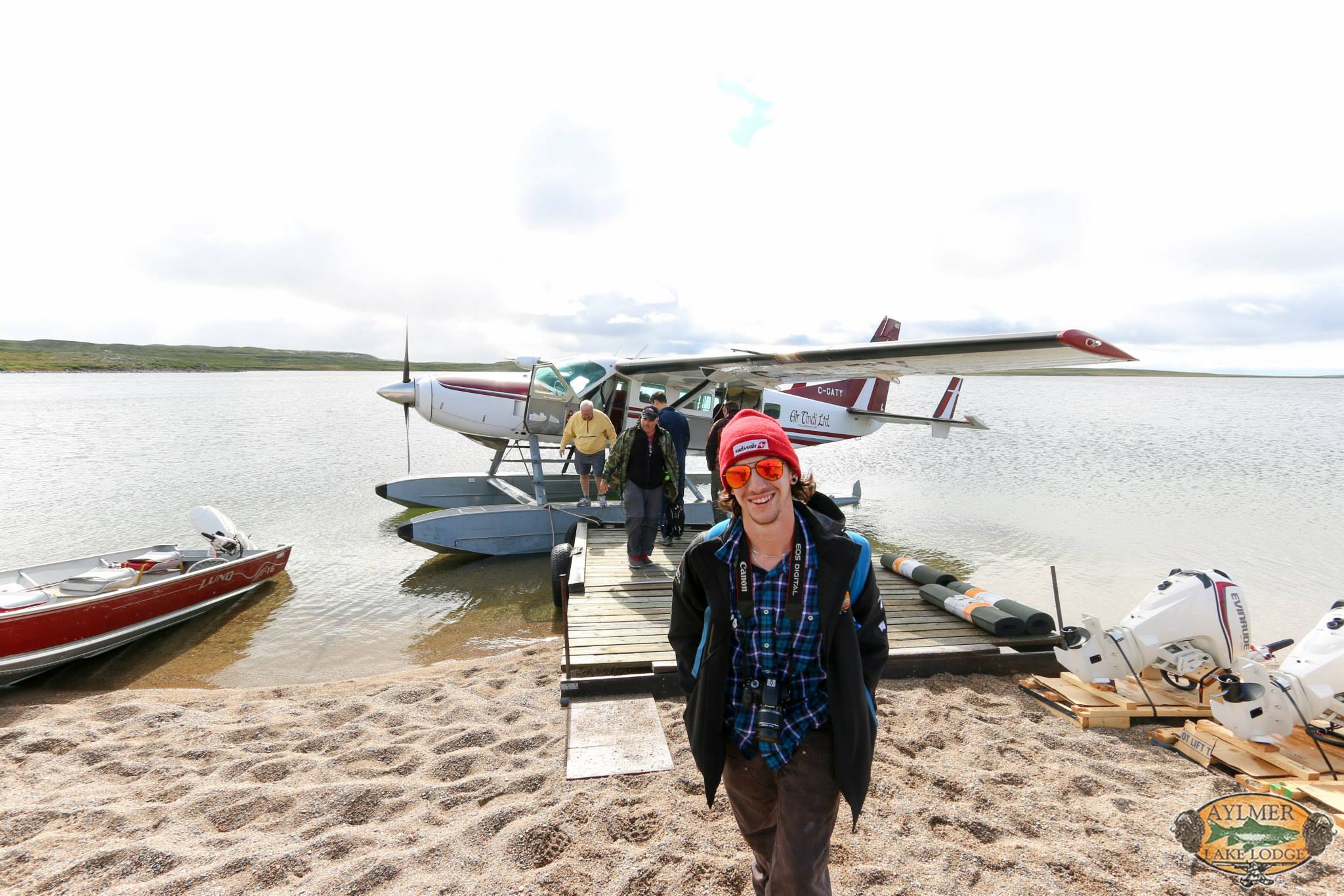
Getting to the far North has never been easier. Airline flights are scheduled daily from the many airlines flying from the south to Yellowknife such as Air Canada-Jazz, First Air, West Jet and Canadian North. These Yellowknife flights connect to all major Canadian and many U.S. cities. You SHOULD arrive a day prior in Yellowknife to your fly out date in order to ensure your connections to Aylmer Lake Lodge.
You’ll depart your hotel in Yellowknife for Float Plane base, leaving Yellowknife between 2:00 and 3:00 and arriving at Aylmer Lake Lodge between 4:00-5:00 pm. Normal flight time to Aylmer Lake Lodge is 1 3/4 hrs. The plane lands on Rocknest Bay and you taxi to our dock right below the lodge.
After you’ve arrived and get settled into your cabins, you’ll come to the Lodge to meet your guides.
When Departing…
When departing from Aylmer Lake Lodge, plan to stay the night in Yellowknife – the float plane does not depart from Aylmer Lake Lodge until later in the afternoon so you’ll need to fly home the following day.
The following accommodations are available in Yellowknife, NWT.
- Explorer Hotel
- Chateau Nova
- Stanton Hotel
- Northern Lights Hotel
- Super 8
- Days Inn and Suites
- Quality Inn and Suites
- Discovery Inn
- Bayside Bed and Breakfast
- Coast Fraser Tower
- Capital Suites
- Mabuhay Lakeside Manor
- Buffalo Nights B&B
- Narwal B&B
Some hotels offer shuttle to and from the airport and the float plane base. As we are a remote fly-in Lodge, we recommend purchasing Global Rescue Travel Insurance for your trip in the event you would need to leave Aylmer Lake ahead of your scheduled departure.

